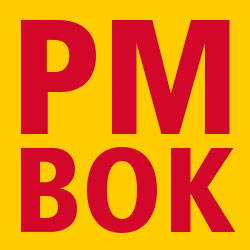Working on your own is easy. All you need is time, energy and a to-do list. But working as a team requires a different set of skills. These three tips will transform your team's productivity levels.
But we all know that people can achieve a whole lot more when we work together.
And that presents its own special set of challenges. How do you organize a team of people in a logical, structured way that serves the ultimate purpose of getting a job done? How do you do it efficiently, without stress or serious delays?
Step forward the discipline of project management
Project management has always been around. From prehistoric megastructures to modern engineering marvels, some powerful minds have pondered the question 'how do we work better as a team?'
One name you might recognize is Henry Gantt, father of the Gantt Chart – a simple system for tracking the time required (and marking the deadlines) for all tasks within a project. And if you’ve ever received a performance-related bonus, you can thank Henry Gantt; he was the first person to formally link the completion of tasks with a payment incentive. Bravo Mr G.
In the past, project management was a sub-discipline of engineering. By the late 1950s, it was being viewed as a discipline in its own right.
Decades of project management development has resulted in a handful of established methodologies, from straightforward Waterfall to heavyweights like PMBOK and PRINCE2. Today, project managers favor faster, change-friendly methods like Lean, Agile, Scrum and Kanban.
We’ve looked at the preeminent project management techniques and extracted their secret ingredients (with a handy download at the bottom of this page). Here are the key ideas we can all use to make our teams and projects run more smoothly and productively. Remember, there’s more to it than spreadsheets and being organized.
Waterfall? Lean? What does it all mean?

Waterfall
The old favorite. A tried-and-tested step-by-step approach, ideal for construction and other project types that are rarely challenged by unexpected developments.

PMBOK
Stands for Project Management Body Of Knowledge. It's a project management heavyweight, most widely used in the US. It’s even a global IEEE and ANSI standard.

PRINCE2
Developed by the British government in the 1980s, PRojects IN Controlled Environments is best for rigorous projects. It's the standard method at the United Nations.

Lean
A powerful concept that helped drive Toyota to global dominance, Lean looks to minimize waste in all its forms. Don’t over-deliver, just deliver what’s needed.

Agile
A grandchild of Lean, Agile comes from software development. It's more a set of principles than a method. Follow Agile's concepts if you need to adapt to changing objectives.

Scrum
Scrum adds a day-to-day method to Agile's overarching principles. Scrum is designed to be fast, flexible and people-focused. And that makes it a popular PM method.

Kanban
You’ve heard of the Kanban board, right? It's another relation of Lean, and brainchild of the clever people at Toyota. The Kanban board is its most famous tool, useful for individuals and teams.
IDEA ONE
What efficiency really means
We all want things to run more 'efficiently'. But what does that really mean? It could refer to almost anything. Speed? Time? Money? Resourcing?
Back in the 1940s and 50s, the clever people at Toyota wanted to make their manufacturing processes more efficient. As part of its ‘lean’ project management principle, they gave ‘efficiency’ a definition: the act of reducing waste.
Waste can be any number of things. It can be literal material waste (in manufacturing or construction, for example), it can be wasting time on things that don’t contribute to the ultimate project goal, wasting money, or wasting effort.
The driving principle is to reduce waste in all its forms. The by-product is 'efficiency'.
WHAT YOU CAN DO RIGHT NOW: Think about everything your organization does. Is it 100% necessary? Where is the wastage? Cut out waste and efficiency will follow.
IDEA TWO
Process (but not too much)
We all know that too much process causes paralysis, but it is easy to overcompensate and strip out all process from your team and project activities. Big mistake. Whether it’s Agile, Scrum, Waterfall, Kanban, PRINCE2 or any other project management technique, they all rely on at least some level of structure and process. Accountability and rigor are essential to at least some stages of any project.
What you need to do is decide on the level of process that is right for your unique situation. As you’ll see in our guide, 8 ways to become a project management master, each of the main project management methodologies offer different levels of process. And each is adaptable to your own needs – you won't get caught by the project management police if you mess with the accepted method!
While too much process can cause slowdowns and frustrations, humans are pattern-loving creatures. We respond to structure and we like routine: a 15-minute scrum meeting at the start of every day? You’ll find most of your team agree it’s a good idea.
A management consultant could help you to refine these processes. Read out article to help decide whether hiring a management consultant is right for your business.
WHAT YOU CAN DO RIGHT NOW: Do you have regular team meetings? Then start today. Make them quick and clearly structured.
IDEA THREE
People, people, people
Your most precious resource is the people on your team.
A good team needs a balanced mix of personality types. For half a century, the Myers-Briggs Type Indicator Test (MBTI) has helped managers identify personality types. Influenced by the ideas of celebrated psychologist Carl Jung, MBTI was published in 1944 by mother-daughter team Katherine Cook Briggs and Isabel Briggs Myers. MBTI claims to shine a light on how an individual perceives the world. Are they primarily (but not exclusively) driven by sensation, intuition, feelings, or thinking?
It’s a strictly non-judgmental approach, and it makes for a fun exercise. But is it useful? Although it’s a big deal in the business and corporate world, its standing among psychologists isn’t so strong. The scientific community views it as unreliable; often the same person can be categorized differently on two different occasions. But if you don’t take it too literally, MBTI can be a great indicator of the type of personalities you have in your team – too many of one type might (emphasis on ‘might’) lead to imbalances and unhappiness among the team.
WHAT YOU CAN DO RIGHT NOW: Identify personality types and make sure there’s a balance between introverts and extroverts. Make sure dominant personalities don't overpower quieter individuals.
Tips from a project management pro
The rules of the game and the steps you take during the game are two different things. Whichever methodology you choose, be sure to follow these five golden rules from Simon Darby at the UK’s Association for Project Management:
Ensure your team knows the direction of travel. Set a meaningful vision for the future and provide clear and consistent messages. Make sure everyone is pulling in the same direction
Set clear priorities. Be decisive in establishing clear priorities for yourself and your team
Promote the benefits of to-do lists and ensure your team knows what the priorities are. Urgency and importance are not the same thing; your team should feel empowered to challenge the urgency or importance of work given to them to work effectively in line with priorities
Learn from the past and experiment to create a fluid and agile working environment that allows team members to thrive
Always remain positive. Be encouraging and open to taking calculated risks and trying new approaches.






